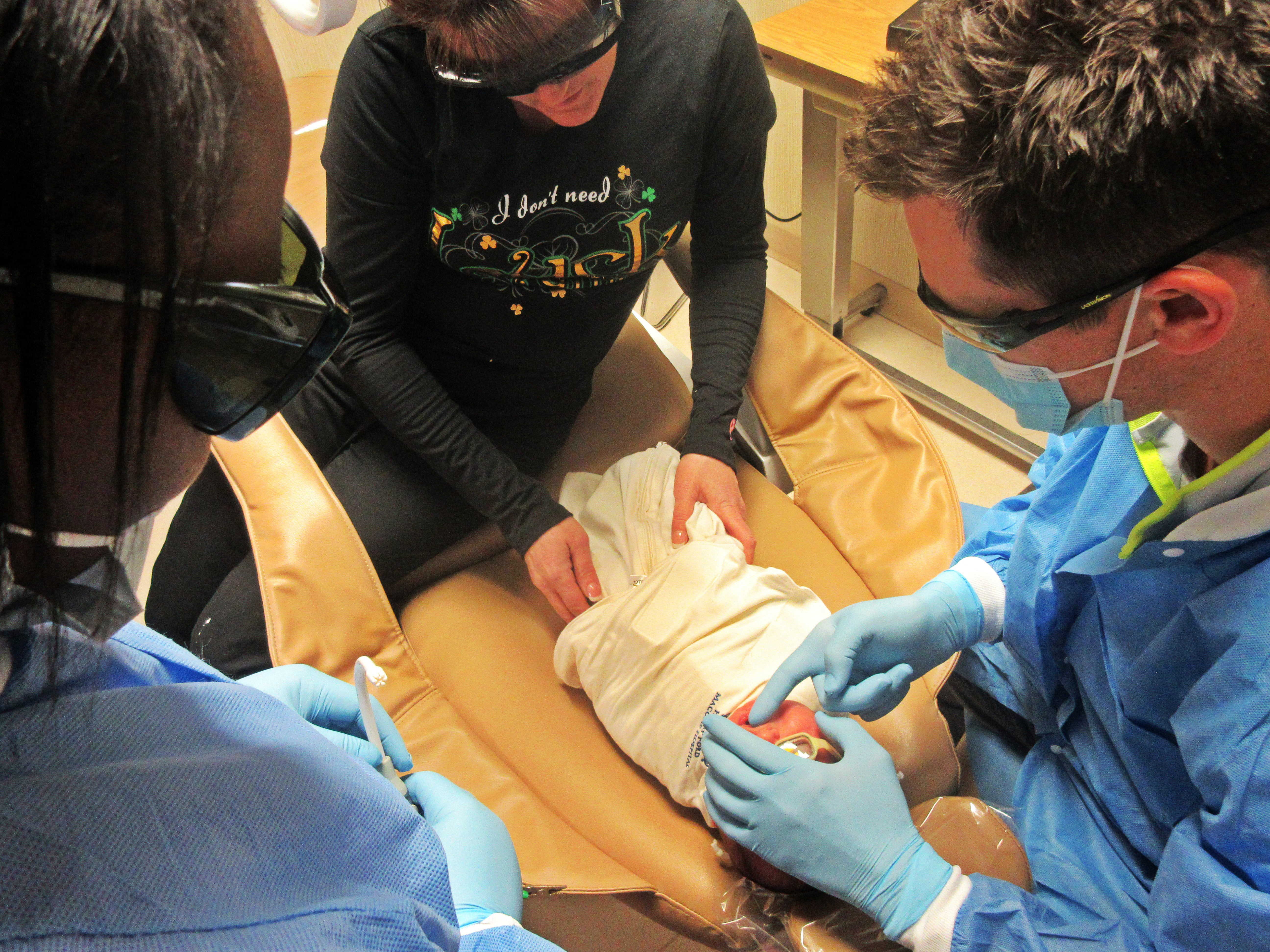ODAF grant recipient expanding services for pediatric dental care

Dr. Christopher Coleman, a volunteer with the Good Neighbor House, performs a tongue tie release procedure on a newborn at the clinic. The clinic received a grant from the ODA Foundation to expand its pediatric dental services.
The Good Neighbor House Dental Clinic in Dayton is one of five recipients of the ODA Foundation’s 2016 Access to Care grants. The $3,000 grant is being used to expand the clinic’s pediatric dental services.
The clinic opened about 20 years ago, and over the last several years has seen an expansion in the number of days it is open and the services provided. And in 2016 the clinic began accepting Medicaid patients, and at that time found a high need for pediatric dental services.
“We’re starting to see more and more children,” said Marcia Viney, lead dental assistant at the clinic. “There are a lot of children who need to have work done but they don’t have any insurance, and many of them are immigrants. Normally when we see them they have a lot that needs to be done.”
She added that many of the patients who come in need extensive dental work, often including scaling and root planning, and many of them come in with a calculus bridge.
Dr. Gregory Notestine, volunteer dental director at the clinic, said that some of the patients they see do not even own a tooth brush because they have never learned the importance of preventive care. He said one of his favorite parts about volunteering at the clinic is being able to educate people about how to care for their oral health.
“The joy in teaching these people, that if you spend these five minutes a day, you don’t have to lose your teeth! To watch them come back and realize they don’t have to end up with dentures is the most rewarding thing we do,” he said.
The clinic has seen a large increase in pediatric patients over the last year. Between September 2015 and February 2016, the clinic saw 54 pediatric patients. Between September 2016 and February 2017, that number increased to 252. The clinic is also being presented with more children who need sedation.
The clinic has used the ODA Foundation grant funds to purchase dental equipment to help grow its pediatric dental services, focusing on those pieces of equipment needed for the most common procedures.
One aspect of pediatric dental care that the clinic has been performing is pediatric tongue tie release procedures. The clinic sees about 10 patients per month for this procedure.
“There is a tremendous advantage to getting babies breast feeding where they couldn’t before,” said Notestine, who is one of the dentists that performs this procedure at the clinic. He said performing the procedure on infants helps families save money on formula, allows children to have proper facial and jaw development, and helps avoid orthodontic, breathing, swallowing and speech problems for them in the future.
Many of the tongue tied babies come from the WIC community, and Notestine said that they are often referred to the clinic by lactation consultants who find the tongue tie. The clinic also brings in a lactation consultant on the days when they are treating tongue ties.
The clinic sees patients who are uninsured, underinsured or on Medicaid. They offer a sliding fee scale for low income patients without insurance, and they also try to keep their costs as low as possible so dental care is affordable for those patients who do not qualify for the sliding fee scale, Viney said.
The clinic performs exams and needed restorative care such as fillings, extractions, dentures, partials, bridges and crowns. A small staff performs many of the procedures, including, two dentists, dental assistants, an EFDA and a hygienist for preventive care days. Additionally, the clinic works with volunteer dentists, including Notestine.
Notestine said volunteering is rewarding, especially the patient education which has a lasting impact on a patient’s oral health. He also said there is a big need for additional volunteers at the clinic.
“Now we just need more volunteers to come in a few hours a week, a few hours a month, or a few hours a year,” he said. “When the Good Neighbor House gets phone calls for care, for every medical call they get about 20 dental calls.”
In addition to the dental clinic, the Good Neighbor House also provides several other services to the community. The Good Neighbor House has medical and vision clinics, as well as a food pantry. Viney said often someone will come in for one service and find that the Good Neighbor House can also help them access additional services they need.
